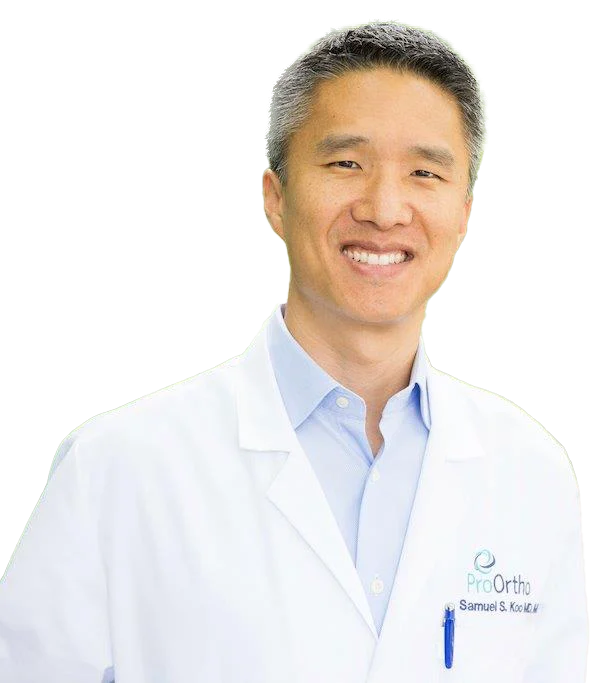Rotator Cuff Surgery in Seattle, WA
Dr. Samuel Koo can perform two different types of rotator cuff repair procedures: open surgery and minimally invasive repair. Typically Dr. Koo is able to repair most rotator cuff tears with a minimally invasive arthroscopic repair. Minimally invasive rotator cuff repair by Dr. Koo involves making smaller incisions and using special tools to repair the damage, while an open procedure involves a much larger incision. Minimally invasive surgery can sometimes have a shorter recovery period than open surgery, but a minimally invasive approach isn’t appropriate for every patient. Surgical treatment of rotator cuff tears are designed to repair the torn tendon back to the humeral head (ball of the shoulder joint). Most rotator cuff tears, small to massive in size, can and should be fixed arthroscopically (minimally invasive technique).
Surgical Treatment for Rotator Cuffs in Redmond, WA
Certain people benefit from surgical intervention by Dr. Samuel Koo, including:
- People who failed nonsurgical treatment
- People who are extremely active
- People with large to massive rotator cuff tears
- Manual laborers or athletes whose maximum strength and function is needed for
overhead work or sports
Why Have Rotator Cuff Surgery?
- You can continue activities you enjoy.
- Surgery is the only route to improve strength.
- Only surgery can promote healing of the tendon to bone.
- Avoid tear getting larger over time.
- Avoid fatty infiltration of the muscle over time (irreversible change).
How Is Rotator Cuff Surgery Done?
The type of surgery performed depends on numerous factors. However, all rotator cuff repairs can be done arthroscopically. In all cases, it involves taking the torn tendon and repositioning it back to its bone bed. Most repairs are done on an outpatient basis.
This technique uses multiple small incisions (portals small enough to fit instruments the size of a pencil) by Dr. Koo to place tools into the shoulder. A variety of methods exist to suture the tendon back to the bone. The most common way is to use suture anchors (biodegradable anchors buried in bone with sutures extending from them) but other methods also exist. All of these techniques have the same goal; getting the tendon to heal to the bone.
What Should I Expect After Surgery?
Most arthroscopic rotator cuff repairs can be performed by Dr. Koo near his Kirkland office on an outpatient basis. You will be placed in a sling for 4-6 weeks and participate in physical therapy sessions.
Non-Surgical Treatment for Rotator Cuffs
In many cases, nonoperative treatment can provide pain relief and improve the daily function of the shoulder. Rotator cuff tears are not life or limb-threatening. You have a choice in deciding the treatment. Some of the commonly prescribed treatments include; rest, ice, avoidance of aggravating activity, anti-inflammatory medications, cortisone injections, and physical therapy.
Learn more about your Rotator Cuff:
Schedule a Rotator Cuff Surgery Consultation
Should surgeon Samuel Koo, MD, MPH has been named a Castle Connolly Top Doctor 7 years in a row and specializes in rotator cuff surgery. To schedule an appointment for rotator cuff surgery in the Seattle, WA area, contact Dr. Samuel Koo at (425) 823-4000 or request an appointment through our secure online form. Our office is located in Kirkland, just a short drive from Redmond, Bellevue, and Seattle.

